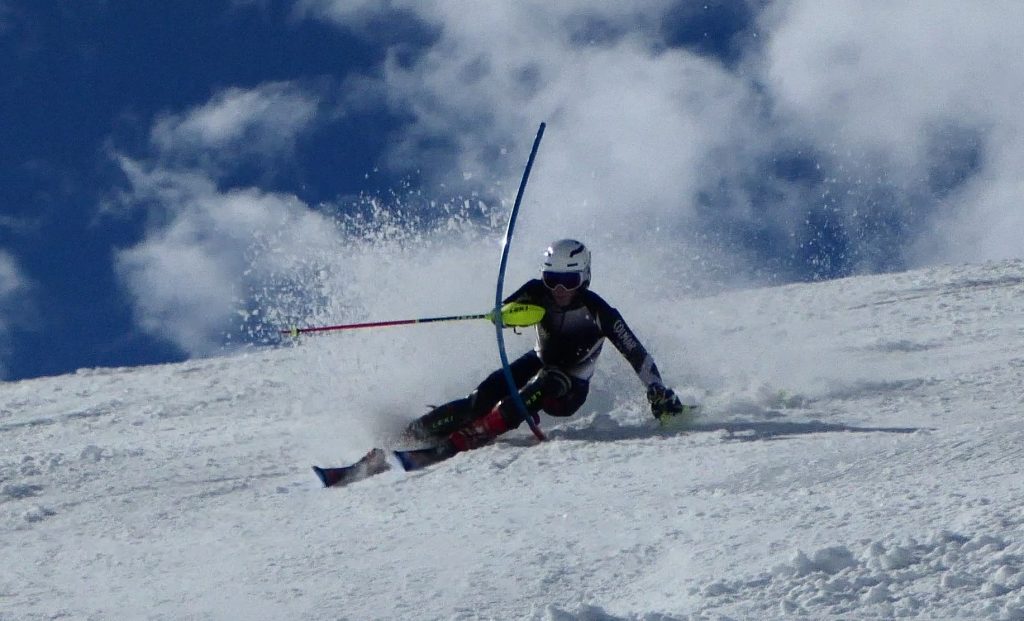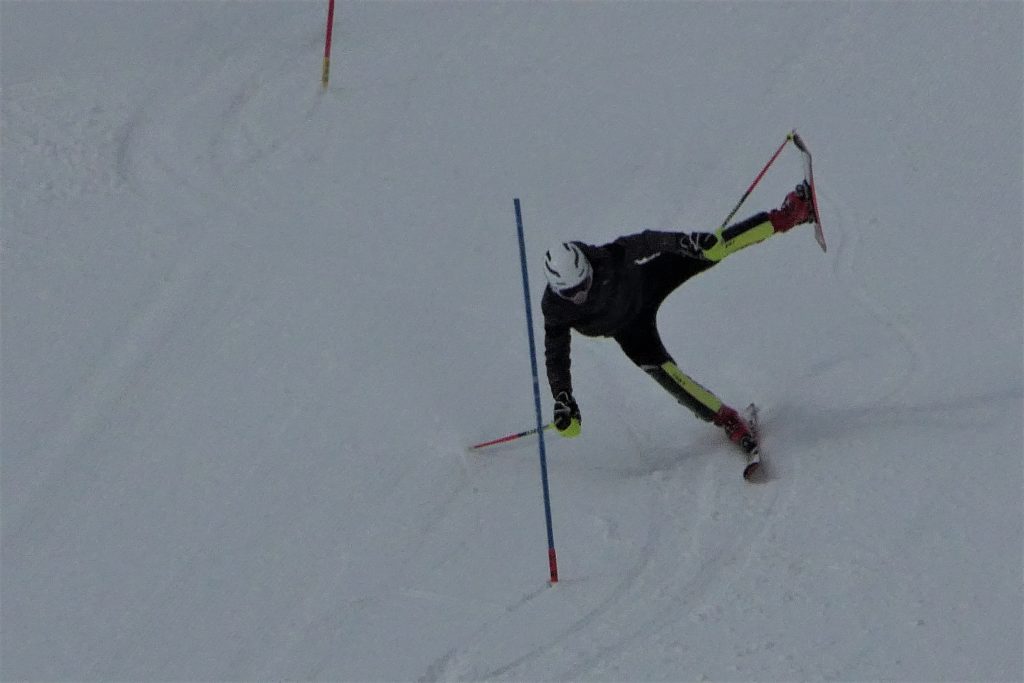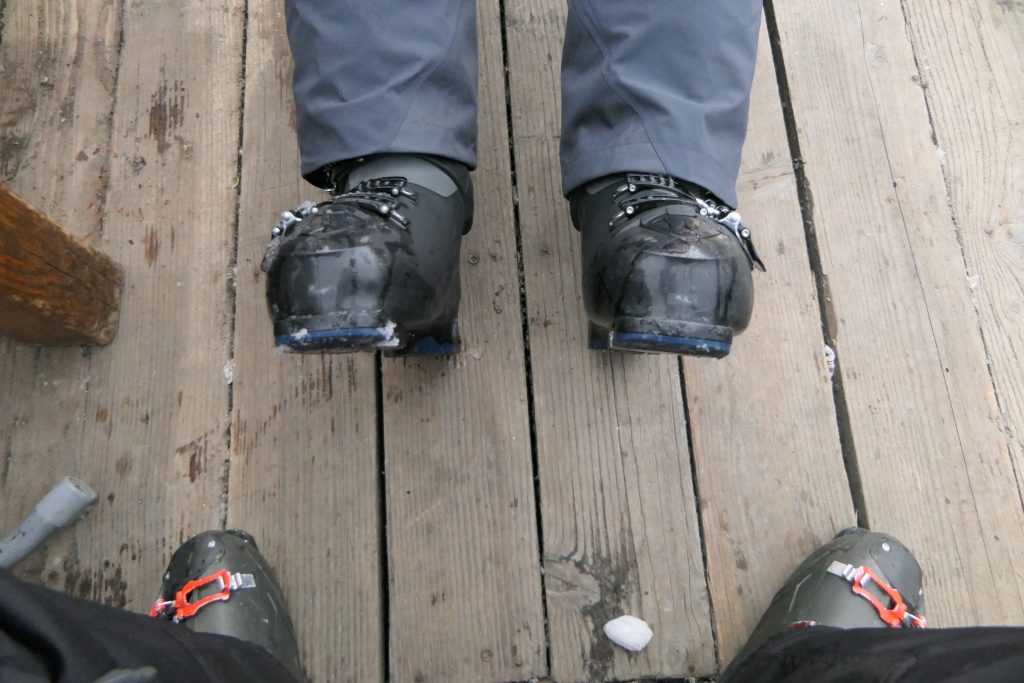Louise had several hours of Snowplough fun (not!) prior to our rendezvous for her first lesson on snow. When asked to explain how to make a turn the answer was “push the ski in with the big toe”. To be honest that’s more than most people can manage – a true testimony to the state of ski instruction in general.
In the initial video – before we made changes – Louise is snowploughing with a lot of body rotation , trying to twist the skis into the turn and with the centre of mass precariously upright and being thrown towards the outside of the turn. This combination of things not only feels unstable and dangerous – it absolutely is dangerous.
Stuart is a strong skier but is hamstrung here by the same lack of dynamics awareness – allowing the body to stay vertical (instead of perpendicular to the slope) and pushing the tails of the skis from side to side for control.
Dynamics
Adults generally need to understand to learn skills. While natural selection does also work – it unfortunately spits out 99.99% as rejects – so we can hope through understanding to avoid being added to that count.
Skiing works the same way as a bicycle – you are never “balancing” – you are “cycling” or “skiing”. Such activities are about disequilibrium and a feedback relationship between the person and the cleverly designed equipment on the ground. You travel forwards and make a subtle but definite fall to one side and the equipment at your feet changes shape and this then cuts in front of you to stop you from falling – lifting you back up – generating a turn in the process. Unlike a bicycle which can easily skid if you fall over too far – the ski (if maintained correctly) just grips more instead.
There is a Link here to “Dynamics” covering the exercises we used.
Where I refer in older descriptions to using the inside of the heel for skiing – please replace this with “ball of the foot”. Both work – but the front of the foot is better. For real security you need to also have “angulation” but it was far too soon to be dealing with that in this session. The photo below shows “angulation at the hip” along with the inclination created with dynamics.

Here is a photo showing the pressurised ski bending – particularly from the front! Although the outside leg is fully extended and is taking all the load – the centre of mass is “down” into the turn.

Here is the video after newly discovering “dynamics”…
Modified Snowplough
We used a modified version of snowplough as this would combine the plough with constructive use of the centre of mass and allow it to be hijacked for cultivating dynamics. The important issue here is that it shows that regardless of what ski you are standing on it’s really the centre of mass direction that matters – not “weight transfer”. We used “Pivoting” to show the hidden mechanics of how a ski really works most of the time – here is the link for “Pivot”. (This has to be worked on specifically before pivoting can be developed as an individual skill).
We briefly discussed how it’s only in pivoting that a “pole plant” is used in skiing – when the ski is “swinging” into the turn – with dynamics – the ski running forward – you just don’t stick that pole into the ground!
The important aspect to remember here is that you start the push of the centre of mass into the new turn from the uphill leg – using the uphill edge of the ski and the outside edge of the foot!!! This prevents “stemming” – and it also helps to compensate for boot alignment issues of the type mentioned at the end of this post.
Photo: Centre of mass went the right way so there was no fall…

Skating
Under the “Beginners” section there are examples of the basic skating exercises used in teaching skiing without snowplough. We used some of this today to encourage the dynamic use of the centre of mass and develop freedom of movement with the legs – which is initially harder for non skaters to connect with.
Alignment
Both skiers had ski boot alignment issues – needing the cuffs of the boots to be canted outward to have the boots correctly aligned with the bone morphology of the legs at hip width apart…


